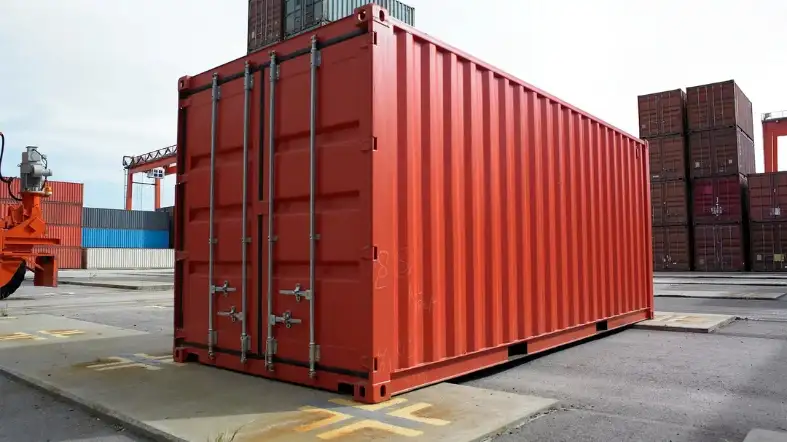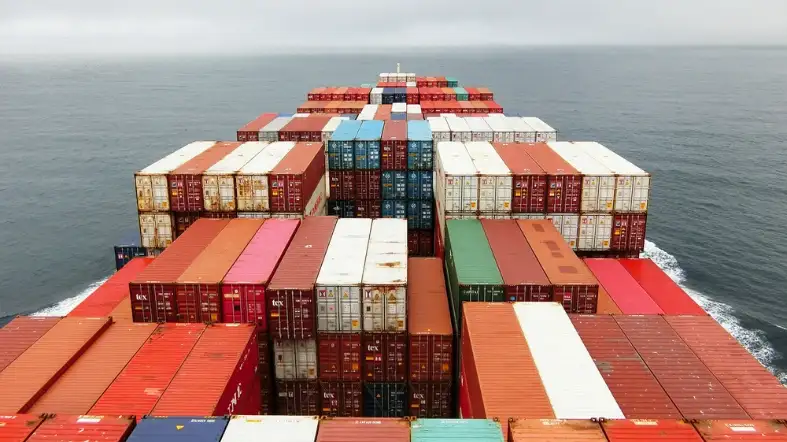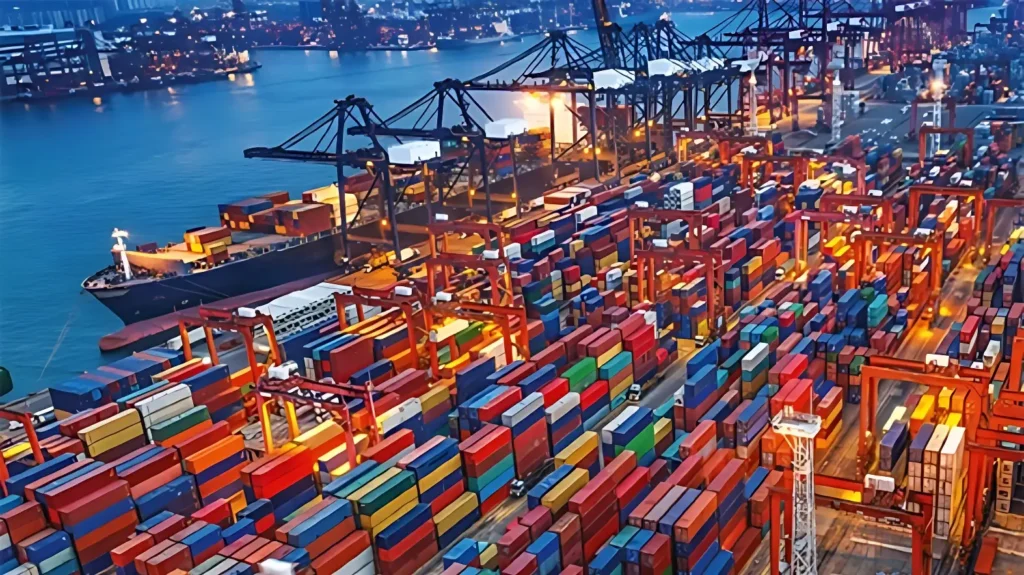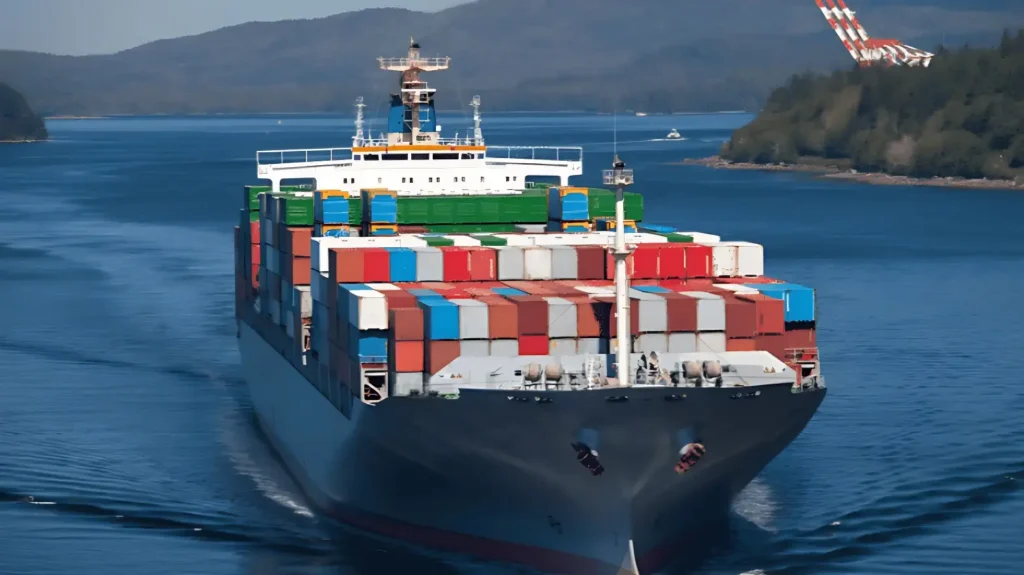You might be curious in the price of shipping a container if you’re thinking about shipping items across international borders.
Today we will examine give you overall cost and discuss factors hat influence container shipping rates.
How Much Does It Cost To Ship A Container?
The pecuniary outlays affiliated with the conveyance of a container could vary greatly anywhere from one grand ($1000) to six grand ($6000).

Here are some of the companies who ships container:
Maersk Line
Maersk Line, a behemoth in the shipping industry, boasts a colossal fleet of over 600 vessels that operate worldwide.
The company proffers an array of container shipping services, which encompass dry cargo, refrigerated cargo, and specialized cargo.
Generally, the cost for transporting a 40-foot container with Maersk Line ranges from $2,000 to $4,000.
MSC
MSC stands as a prominent player within the container shipping sector, with a robust fleet of over 500 vessels at its disposal.
Their range of shipping services spans across various types of container cargo, including dry, refrigerated, and special cargo.
The fees for availing MSC’s shipping services hinge upon the type of cargo being transported, the destination, and the size of the container.
The average cost of MSC from two grands ($2,000) to four grands ($4,000) for shipping a 40-foot container.
CMA CGM
CMA CGM is a French container shipping company that operates a fleet of more than 500 vessels.
CMA CGM extends a diverse selection of container shipping services, encompassing dry cargo, refrigerated cargo, and special cargo.
By and large, shipping a 40-foot container through CMA CGM costs approximately between $2,000 and $4,000.
Hapag-Lloyd
Hapag-Lloyd is a German container shipping company that operates a fleet of more than 230 vessels.
Hapag-Lloyd provides an assortment of container shipping solutions, consisting of dry cargo, refrigerated cargo, and special cargo.
The fee for delivering a container through Hapag-Lloyd is variable and contingent on the size of the container, the intended destination, and the type of load being shipped.
Typically, the cost of shipping a 40-foot container through Hapag-Lloyd falls within the range of $2,000 to $4,000.
Evergreen Line
Evergreen Line is a Taiwanese container shipping company that operates a fleet of more than 200 vessels.
Evergreen Line presents an array of container shipping services, comprising dry cargo, refrigerated cargo, and special cargo.
The shipping fee for a container with Evergreen Line fluctuates based on factors such as the container’s size, the final stop, and the type of goods being shipped.
Generally, the cost of shipping a 40-foot container through Evergreen Line averages between $2,000 and $4,000.
What To Consider Before Shipping A Container Overseas

Shipping containers overseas can be a complex and costly process, with a variety of factors impacting the final price tag:
Step 1: Choose Your Container Type
The initial step towards ascertaining the expense of transporting a container overseas is the selection of a suitable container to cater to your specific needs.
There exists a wide range of containers at your disposal, such as the standard 20 or 40 feet containers, open-top containers, refrigerated containers, and various other options.
The selection you make will hinge upon the dimensions and nature of the items that you intend to transport, as well as any additional prerequisites for special handling.
Step 2: Determine Your Shipping Route
The shipping route is another key factor in determining the cost of shipping a container overseas.
Factors such as distance, port fees, and fuel costs can all impact the final price tag.
Some routes may be more expensive than others, depending on the availability of shipping lines and carriers.
Step 3: Calculate Freight Charges
Freight charges will also play a significant role in the total cost of shipping a container overseas.
These charges will depend on the weight and volume of the cargo, as well as the shipping route and any additional handling requirements.
Step 4: Consider Additional Costs
In addition to the above factors, there may be additional costs associated with shipping a container overseas.
These can include insurance, packing and loading fees, storage charges, and more.
Step 5: Get Quotes from Shipping Companies
To obtain a precise estimate of the expenses incurred for transporting your container abroad, it is advisable to solicit quotations from multiple shipping companies.
Ensure that you furnish them with comprehensive details regarding your consignment, such as the container category, the shipping itinerary, and any additional specifications.
Factors that Affect Container Shipping Costs

We will discuss the different factors that influence container shipping costs and provide useful insights that can help you better understand how shipping costs are calculated.
Container Size and Type
The size and type of container you choose can significantly impact shipping costs.
The final price of shipping a container relies heavily on several elements, which include the dimensions of the container, that can differ from 20 to 40 feet, and the kind of container that is being used, either the conventional type or the refrigerated one.
Undeniably, these determinants will have a direct impact on the overall expense for shipping.
Larger containers are generally more expensive to ship, but they can also provide significant cost savings if you’re shipping bulk goods.
Distance and Destination
The distance between the shipping origin and destination is one of the primary factors affecting container shipping costs.
The further the destination, the more expensive the shipping cost will be.
In addition, the destination country’s regulations and customs fees can add additional costs to the overall shipping cost.
Seasonality and Peak Periods
Container shipping costs can vary based on seasonality and peak periods. During peak periods, such as the holiday season, shipping costs can increase significantly.
Shipping during non-peak periods can result in more affordable shipping costs.
Fuel Costs
Fuel costs are one of the most significant factors affecting container shipping costs. Fluctuations in oil prices can cause shipping costs to increase or decrease.
When oil prices are high, shipping companies will likely pass on these costs to customers by increasing shipping rates.
Cargo Weight and Volume
The weight and volume of the cargo being shipped can also affect container shipping costs.
Heavier and larger shipments will require more fuel, which increases shipping costs.
It’s essential to accurately measure and weigh your cargo to ensure you’re not overpaying for shipping.
Carrier and Shipping Line
The shipping carrier and line you choose can also affect container shipping costs.
Different carriers and shipping lines have different rates, and choosing the right one can save you money.
Working with a reputable carrier and line is critical to ensure your goods are shipped safely and on time.
Insurance and Additional Fees
Insurance and additional fees, such as terminal handling charges and customs clearance fees, can also impact container shipping costs.
It’s essential to understand all the additional costs involved in shipping to avoid any unexpected costs.
Market Demand and Supply
Market demand and supply can also affect container shipping costs. If there’s a high demand for container shipping services, shipping costs are likely to increase.
On the other hand, if there’s a surplus of container shipping capacity, shipping costs can decrease.
Currency Fluctuations
Currency fluctuations can also impact container shipping costs.
Security Regulations and Compliance Costs
Security regulations and compliance costs, such as implementing safety measures and cargo inspections, can also increase container shipping costs.
5 Strategies to Reduce Your Container Shipping Expenses

Here we will explore five strategies that you can implement to reduce your container shipping expenses.
Optimize Your Shipping Volume
The volume of your shipments can significantly impact your shipping costs.
When shipping large quantities of goods, it is more cost-effective to ship in a full container load (FCL) than in a less than container load (LCL).
FCLs are priced per container, while LCLs are priced per cubic meter.
Consider Different Carriers and Routes
Another way to reduce your shipping expenses is to research different carriers and routes. Carriers charge different rates depending on their route and destination.
You should shop around to find the carrier that offers the most competitive rate for your specific shipping needs.
Additionally, some routes may be more cost-effective than others, depending on the time of year and shipping demand.
Negotiate Rates with Your Carrier
Don’t be afraid to negotiate rates with your carrier.It is essential to establish a good relationship with your carrier to benefit from lower rates.
You can also consider entering into long-term contracts with your carrier to secure lower rates.
Invest in Shipping Technology
Investing in shipping technology can help you optimize your shipping processes and reduce your costs.
For example, transportation management software (TMS) can help you streamline your logistics processes, allowing you to manage your shipments more efficiently.
Additionally, cargo tracking technology can help you identify potential problems in your shipments, such as delays or damages, and take corrective action promptly.
Take Advantage of Container Repositioning
Container repositioning is the process of moving containers from locations where they are in surplus to locations where they are in demand.
If you can take advantage of container repositioning, you may be able to reduce your shipping costs.
For example, if you are shipping goods from Asia to North America, you may be able to take advantage of container repositioning by shipping your goods in a container that is returning to North America from Asia.
FAQ
Is It Cheaper To Ship By Sea Or Air?
Generally speaking, shipping by sea is cheaper than shipping by air.
However, air shipping can be faster and may be a better option for certain types of cargo or time-sensitive shipments.
How Much Does It Cost To Insure My Container Shipment?
The cost of insuring a container shipment can vary depending on the value of the cargo and the level of coverage desired.
As a general rule, insurance typically costs between 0.5% to 2% of the cargo’s declared value.
Are There Any Additional Fees Associated With Container Shipping?
Yes, there are typically additional fees and surcharges associated with container shipping.
These can include charges for customs clearance, terminal handling, fuel surcharges, and other miscellaneous fees.
How Can I Find The Best Container Shipping Rates?
To find the best container shipping rates, it’s important to compare rates and services from multiple shipping companies.
You can do this by requesting quotes from different providers, checking online reviews and ratings, and asking for recommendations from other businesses or contacts in the industry.
Additionally, consider factors like transit time, service reliability, and customer support when evaluating different shipping options.
Conclusion
Nevertheless, comprehending the critical variables that affect the ultimate price is imperative.
Whether it be for commercial or personal purposes, conducting thorough research and collaborating with a reliable shipping enterprise is essential to achieve a seamless and cost-efficient shipping process.
By investing time into weighing up options and planning ahead, you can navigate the intricacies of shipping containers and transport your cargo to its intended destination without causing financial strain.
